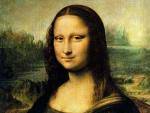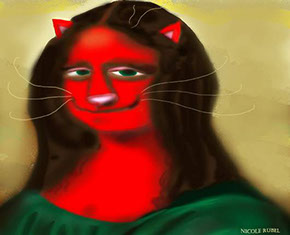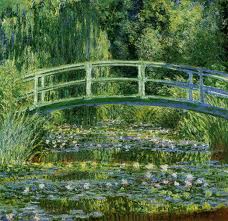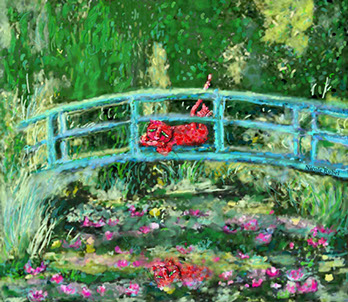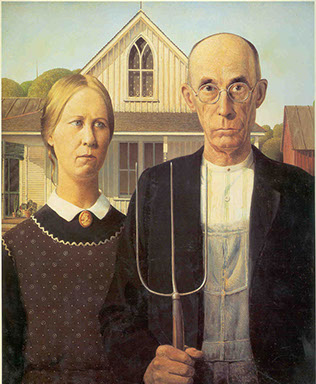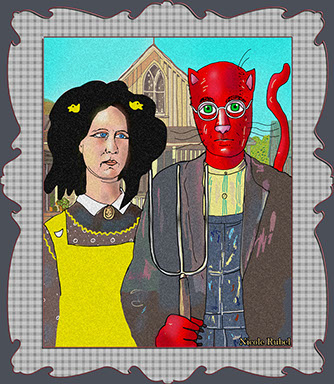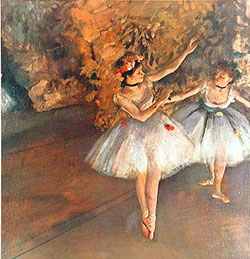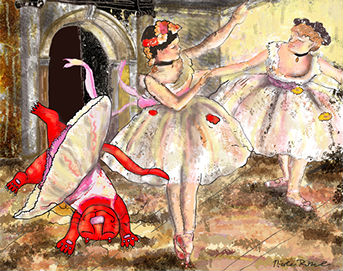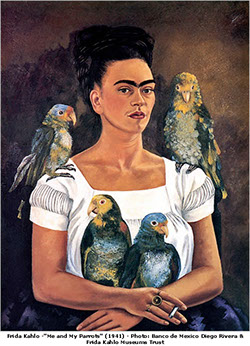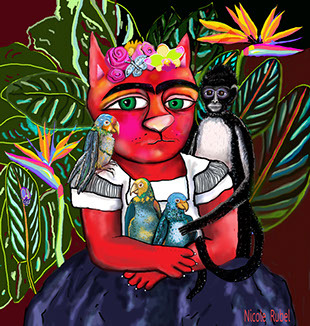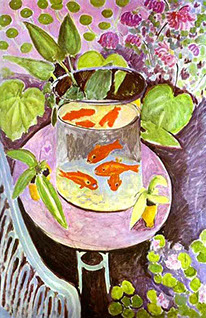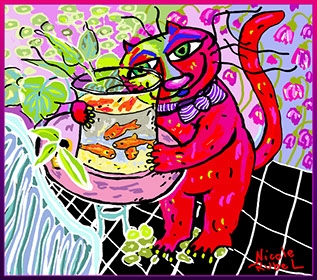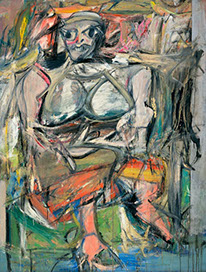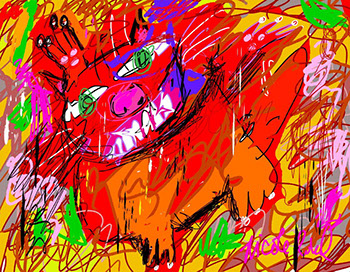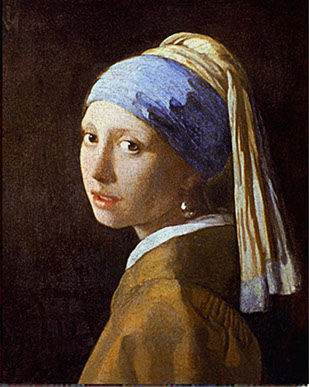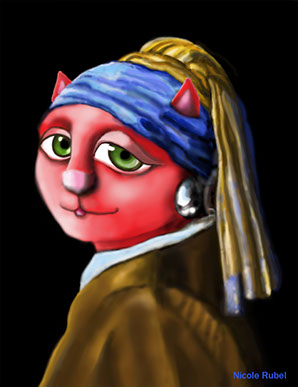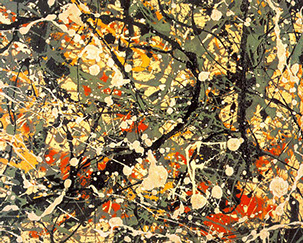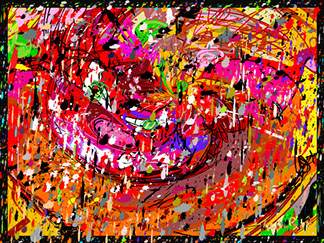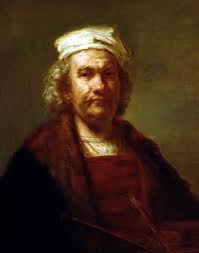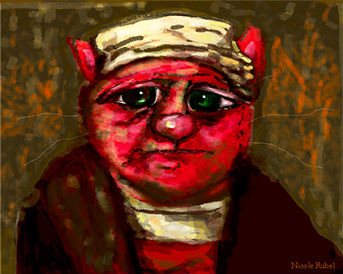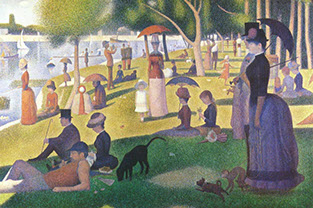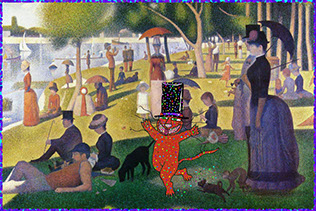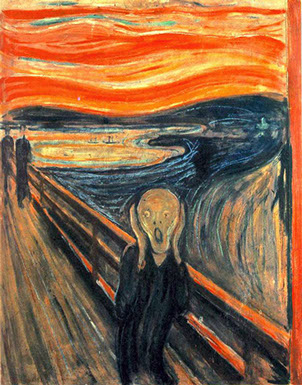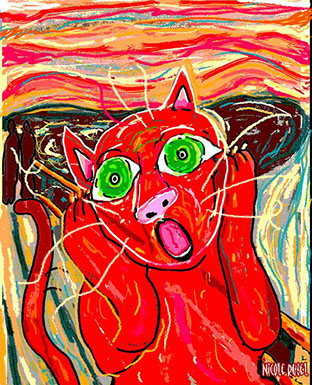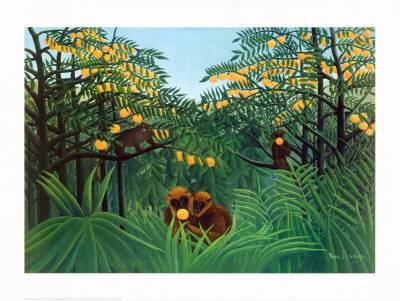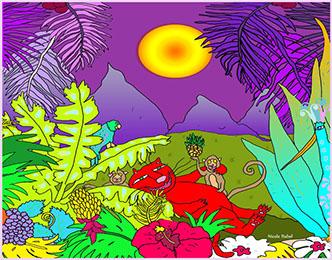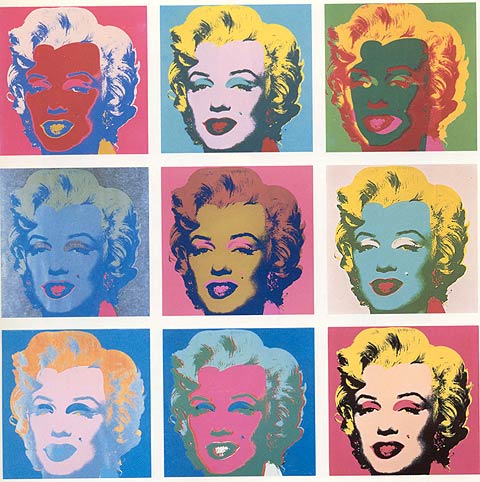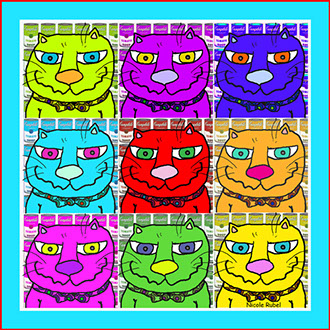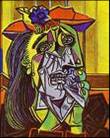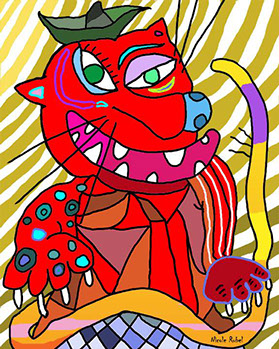Nicole Rubel's World of Rotten Ralph
Art History Favorites with Rotten Ralph!
By Nicole Rubel
Here are some examples of what Nicole does with art from the Masters!
What if famous Master painters owned a cat like Rotten Ralph? Let's imagine and create.
You, too, can take an image you like and create something new. Experimenting with different art styles can help you learn about the basics of art that include these important elements: color, composition, content, and most importantly, creativity.
Leonardo da Vinci, 1452-1519, was a Florentine genius. He drew, painted and sculpted from real life. He studied anatomy by cutting apart dead people and animals. He was also a scientist, inventor, writer, engineer, architect and musician. v
Claude Monet (1840 ñ 1926) was a founder of French impressionist painting, and the most consistent and prolific practitioner of the movement's philosophy of expressing one's perceptions before nature
Grant Wood, 1891-1942, Cedar Rapids, Iowa. He developed a boldly realist style in his depictions of the Midwest with a hint of wry humor. Realism includes present-day subject matter, painted in a detailed manner. http://xroads.virginia.edu/~ma98/haven/wood/home.html
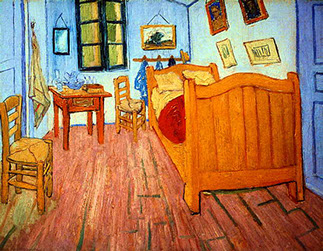
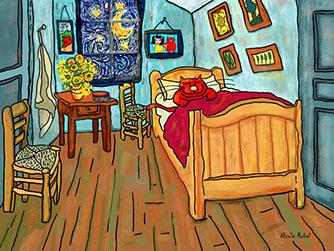
Vincent van Gogh, 1853-1890, was a Dutch Expressionist painter. He conveyed his intense feelings in his artwork with bright contrasting colors. His technique of painting thickly is called impasto. Sometimes he worked with a palette knife instead of a brush.
Edgar Degas, 1834-1917, was a French artist who used pastels as well as paint. His work was shown with the Impressionist painters because he used bright dabs and splashes of color. He tried to capture motion or movement when he painted his ballet dancers.
Frida Kahlo de Rivera, 1907- 1954, was a Mexican painter. She was known for her vivid and intense self-portraits in the Mexican folk art style. She contracted polio as a child and suffered for years after a serious car accident. These and other painful events influenced her remarkable and individual paintings.
Henri Matisse, 1869-1954, was a French Fauve painter. The word fauvism means wild beast in French. Matisse filled his artwork with flat, bright colors and playful fresh shapes.
Willem de Kooning, 1904-1997, was a Dutch-born American Abstract Expressionist Painter. He combined the human figure with abstract art on his large canvases. He was an "action painter," where paint was dribbled, splashed or smeared onto the canvas. He was best known for his paintings of women.
http://www.willem-de-kooning.com
Johannes Vermeer, 1632-1675, was a Dutch Baroque period painter. He painted slowly and created luminous works applying thin glazes over his ground layer of gray or ochre. His works are rare. Of the 35 or 36 paintings generally attributed to him, most portray figures in interiors.
http://www.essentialvermeer.com/
Jackson Pollock, 1912-1956, was an American painter and major figure in the Abstract Expressionist movement. Instead of using the traditional easel he attached his canvas to the floor or the wall and tossed and dripped his paint from a can and even used his fingers to splatter paint. He was known as an "action painter," where paint was dribbled, splashed or smeared.
http://www.jacksonpollock.com/
Rembrandt Van Rijn, 1606-1669, was a Dutch oil portrait painter. He was famous for his use of light and dark known as chiaroscuro. He produced over seventy self-portraits.
Georges Seurat, 1859-1891, was a French Impressionist painter. He created an art style known as Pointillism. Instead of brush strokes he used tiny dots of pure color. When seen from a distance, the dots blend into natural and recognizable shapes.

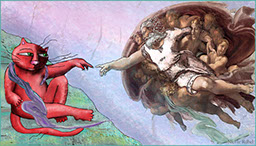
Michelangelo di Lodovico Buonarroti Simoni, 1475 -1564, perhaps the greatest influence on western art in the last five centuries. He was a sculptor, architect, poet, and engineer during the period known as High Renaissance.
His enormous fresco, (which means to paint on wet plaster), is on the ceiling of the Sistine chapel in the Vatican in Italy. His art style was known as Mannerism. Mannerism used complicated composition, with muscular and elongated figures and a fully-saturated palette. http://artsmarts4kids.blogspot.com/2007/09/michelangelos-sistine-chapel-ceiling.html
Edvard Munch, 1863-1944, was a Norwegian artist. He was known as an Expressionist. His paintings had strong color and exaggerated shapes that expressed his feelings and imagination.
Henri Rousseau, 1844-1910, was a French painter who painted from his imagination. He created brightly colored jungle scenes though he never left France. t
Andy Warhol, 1928-1987, was an American Pop Art artist. Pop art was an art movement in the 1960’s that used popular culture or advertisements as its subject matter. Warhol painted or silkscreened many household items like soup cans or soap boxes. He also used repeated images of famous people.t
Pablo Picasso, 1881-1973, was a Spanish artist. He was known as a Cubist. His subject matter was painted in geometric or abstract shapes seen from several angles.
